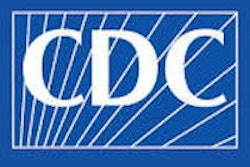
The new year has arrived, and it could provide an opportunity to reinvigorate your practice's infection-control measures. The serious consequences that can result from lapses in infection-control diligence at a dental practice were on full display before the public in early 2013. The case of oral surgeon W. Scott Harrington, DMD, is still playing out, but Oklahoma health officials have confirmed that 100 patients have tested positive for HIV and hepatitis after numerous violations of health and safety laws.
Now, that case has spurred the Journal of the American Dental Association to publish an overview of the hepatitis C virus (HCV) authored by two epidemiologists from the division of viral hepatitis at the National Center for HIV/AIDS, Viral Hepatitis, STD, and TB Prevention at the Centers for Disease Control and Prevention (CDC) in Atlanta (December 2013, Vol. 144:12, pp. 1340-1346).
"This review brings dental healthcare providers up to date with the natural history and epidemiology of HCV; new screening guidelines from the CDC; and new treatment, surveillance, and healthcare-associated HCV transmission and prevention options," the authors wrote.
The need for proper infection control to prevent the spread of HCV is clear. Half of those with the virus "are unaware of their infection status," the authors noted. There are some 3.2 million people in the U.S. that have chronic HCV infection, most of whom are asymptomatic, and 1.6% of the U.S. population has been infected with it at some point. Baby boomers are more likely to have HCV, since an infection rates of 3.25% is estimated for those born between 1945 and 1965. Consequently, it is all but certain that clinicians will treat a patient with the virus in their practice.
Injection drug use has the highest risk for HCV infection, and the rise of prescription drug abuse has impacted who participates in such behavior. There are "clusters of HCV among young nonurban adults injecting drugs, who often started injecting cheaper heroin when they lost access to prescription opioids," the authors noted.
Injection drug users were among the few groups recommended for HCV infection screening until 2012. Now the CDC recommends a one-time test for all adults born between 1945 and 1965 as well. While rapid blood tests are available, none detecting antibodies in saliva has been approved in the U.S.
The understanding of HCV has increased considerably since its discovery in the late 1980s, but gaps in knowledge have prevented the creation of a vaccine. However, new treatments have arrived in the last three years and more are on the way. Protease inhibitors telaprevir and boceprevir were approved by the Food and Drug Administration (FDA) in 2011, and have superior success rates when used in conjunction with interferon and ribavirin than when those drugs are used alone. Another drug, sofosbuvir, has been submitted to the FDA for approval.
"These and other therapies currently undergoing clinical trials already are revolutionizing the treatment of chronic HCV infection," the authors noted.
Prevention, of course, is a far superior alternative to treatment and standard precautions are still the best way to keep patients and clinicians safe from HCV. Injection safety is of the utmost importance, since "most HCV transmissions in outpatient healthcare settings have been attributed to syringe reuse or other practices that led to contamination of the solution or medication intended to be injected," the authors explained.
Accidents can happen in the most cautious of practices, and the authors urged clinicians to have a responsorial protocol in place. The CDC recommends a baseline HCV antibody test for both the exposed clinician and the source patient, the authors noted. The clinician should also receive a baseline assessment of alanine aminotransferase (ALT) activity. More testing should take place four to six months after the event.
The CDC's website, CDC.gov, has a host of infection-control information covering a range of topics, including injection safety, guidelines and recommendations for healthcare-associated infections, and healthcare-associated hepatitis B and C outbreaks reported to the CDC.
Many different medical facilities have a degree of oversight provided by the Centers for Medicare and Medicaid Services, which performs audits and surveys of different infection-control practices. However, "no such oversight exists for monitoring infection control practices in dental settings," the authors warned. Therefore, it is incumbent on the clinicians in dental practices to keep their patients safe.



















